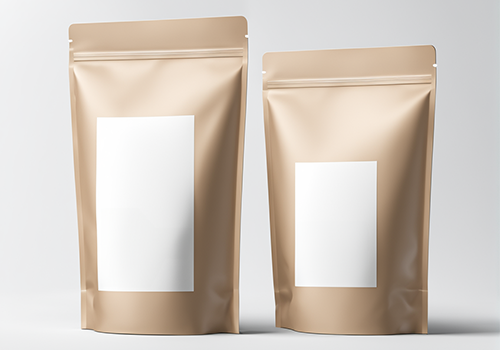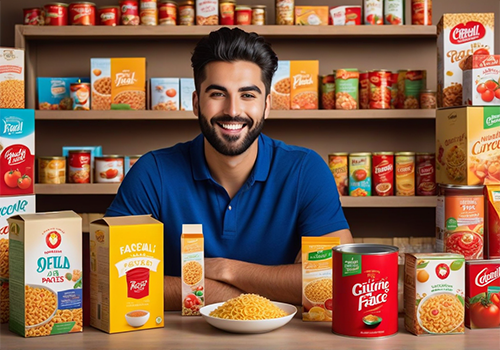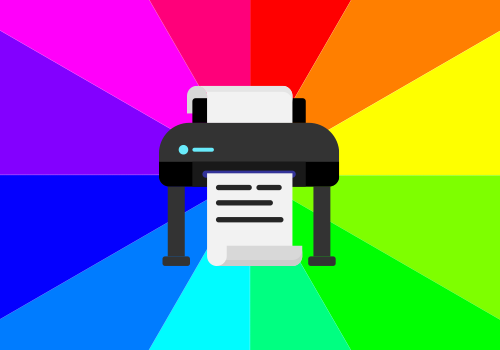Introduction to Packaging Printing: Processes, Types, and Significance
Packaging is a ubiquitous part of our daily lives. From the cereal box on your breakfast table to the sleek packaging of your new smartphone, it's everywhere. But have you ever wondered about the intricate processes, the types, and the significance of packaging printing in our modern world?
Packaging isn't merely a protective shell for a product; it's a powerful tool in the world of marketing and branding. It's often the first point of contact between a consumer and a product, creating a vital first impression. Think about your favourite brands – their packaging is an integral part of what makes them recognisable and memorable.
Processes of Packaging Printing
Packaging printing encompasses various methods to transfer vibrant designs onto packaging materials, each with its own unique advantages.
Offset printing is a popular choice for packaging due to its versatility. It involves transferring an inked image from a plate to a rubber blanket, then onto the packaging material. This method is known for its exceptional colour reproduction and is frequently used for high-quality packaging, such as cosmetic boxes and product labels.
Flexography printing employs flexible relief plates to apply ink to various packaging materials, making it ideal for curved or uneven surfaces. It's commonly used for items like food packaging, as it's cost-effective and allows for rapid printing.
Gravure printing utilises engraved cylinders to apply ink onto packaging materials. This method is well-suited for high-volume, long-run production, making it popular for items like magazines and wallpaper. In packaging, gravure is often used for intricate designs and high-quality imagery.
Digital printing is a modern method offering exceptional flexibility and customisation. It involves the direct printing of digital files onto packaging materials, eliminating the need for plates. This approach is perfect for short runs, prototyping, and personalised packaging.
These various printing processes allow manufacturers to choose the best fit for their specific packaging needs.
Types of Packaging
Packaging isn't one-size-fits-all. It comes in different forms, each with a specific role in preserving and presenting products.

Primary packaging is what directly contains the product. It serves a dual purpose - protecting the product and attracting the consumer's eye. Think of a beautifully designed perfume bottle or a food canister that showcases the product within. Primary packaging not only safeguards the product but also plays a crucial role in marketing. It's the first thing consumers see on the shelf, making it essential for brand recognition and consumer attraction.
Secondary packaging is the layer that surrounds primary packaging. Its purpose is to group primary packages together, provide additional protection, and convey essential information. Common examples include the cardboard boxes that hold multiple cereal boxes or the shrink-wrap around a six-pack of beverages.
Tertiary packaging is all about logistics. It's the outermost layer that facilitates storage, transportation, and handling of products in bulk. These materials, such as pallets, crates, and stretch wrap, are vital for ensuring the safe journey of products from the manufacturer to the retailer.
Different Packaging Materials
Packaging materials play a significant role in the functionality and sustainability of packaging. Here are some common materials used in packaging:

- Cardboard and Paperboard: Often employed for primary and secondary packaging, cardboard and paperboard are eco-friendly and versatile options. They can be easily customised for branding and product information.
- Plastic: Plastic materials, such as PET, HDPE, and PVC, are lightweight, durable, and widely used in various packaging types. They offer excellent protection and are commonly used for beverage bottles, food containers, and more.
- Glass: Glass packaging imparts a premium and recyclable feel. It's popular for premium beverages and cosmetic products, emphasising the product's quality and purity.
- Metal: Metal packaging, like aluminium cans, is known for its durability and ability to preserve the freshness of products, making it suitable for beverages and canned foods.
- Flexible Packaging: Materials like plastic films, foil, and laminates are used in flexible packaging, offering versatility, cost-efficiency, and space-saving features.
Understanding the different packaging materials is essential for making informed choices in packaging design and sustainability efforts.
Significance of Packaging Printing
Packaging printing plays a pivotal role in various aspects of marketing, branding, and consumer experience.

Packaging is an extension of a brand's identity. It's the first interaction consumers have with a product, and it conveys a brand's message. Companies use packaging as a canvas to tell their story and establish brand recognition. For instance, think of the iconic Coca-Cola bottle or the unmistakable design of Apple product packaging.
Successful branding through packaging isn't limited to big corporations; it's a powerful tool for small businesses as well. A memorable package can make your product stand out in a crowded market.
Beyond aesthetics, packaging is essential for the safety and information of consumers. It keeps products intact during shipping and storage, preventing damage or contamination. Labels and packaging materials also provide crucial information such as ingredients, usage instructions, and safety warnings.
Furthermore, packaging serves sustainability goals by reducing food waste and preserving product quality. It also enhances user experience through convenience features like easy-open spouts or resealable zippers.
The Role of Colour-Managed RIP Software
Colour management is a critical aspect of packaging printing. Achieving accurate and consistent colour reproduction across various packaging materials is essential for maintaining brand integrity and visual appeal. This is where RIP (Raster Image Processor) software comes into play.
Colour-managed RIP software ensures that the colours in your digital design align with what appears in the proof, not just the final printed product. It analyses the colours in your digital files, converts them into a format compatible with the printer, and fine-tunes colour settings to produce the desired output.
This software is particularly valuable in the packaging industry, where colour consistency is a must. Whether it's a cereal box, a beverage label, or a cosmetic package, consumers expect the product to look the same every time they purchase it.
The Benefits of Using RIP Software in Packaging Printing
RIP software plays a pivotal role in the packaging printing industry, offering a range of valuable benefits that enhance the overall printing process. Here are some key advantages:
- Colour Consistency: RIP software ensures accurate and consistent colour reproduction across different materials and print runs. This consistency is crucial in packaging, where brand colours must be precisely matched every time, maintaining brand integrity and recognition.
- Improved Efficiency: RIP software optimises the printing process, reducing errors and the need for reprints. This not only saves time and resources but also minimises waste, contributing to sustainability efforts.
- Enhanced Print Control: RIP software allows for fine-tuning of various printing parameters, such as dot gain and ink density, leading to better control over the final output. This level of control is invaluable when striving for top-quality packaging.
- Compatibility: RIP software can handle various file formats, making it easy to integrate into existing printing workflows. It streamlines the process, from design to print, ensuring a smooth transition and minimal hiccups.
- Faster Turnaround: With RIP software, complex files are processed quickly, reducing waiting times and enabling faster turnaround on orders. This is particularly important when dealing with time-sensitive projects.
- Versatility: Whether you're working with offset, flexography, gravure, or digital printing, RIP software is adaptable and compatible with various printing technologies, making it a versatile choice for packaging manufacturers.
In the highly competitive world of packaging, the use of RIP software not only improves the quality of the final product but also helps businesses operate more efficiently, meet deadlines, and maintain brand consistency. Its adoption is a clear demonstration of the industry's commitment to quality and precision.
Packaging Precision
Packaging printing is where art meets purpose, turning ordinary products into memorable brand experiences.
The various printing processes, types of packaging, and materials offer a wealth of choices for manufacturers to showcase their products in the best light. Understanding the significance of packaging in conveying a brand's identity, ensuring product safety, and contributing to sustainability goals underscores its critical role in modern commerce.
With the help of RIP software, packaging manufacturers can amp up the quality of their final products, maintain brand consistency, boost efficiency, and contribute to sustainability efforts. In the competitive world of packaging, embracing these technological advancements shows a commitment to quality, precision, and brand success.



